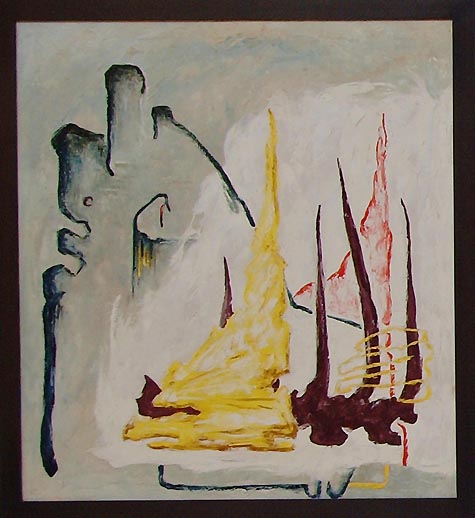
|
||
|
Portland art blog + news + exhibition reviews + galleries + contemporary northwest art
|
||
Clyfford Still in the Northwest 
Clyfford Still's 1937 8A (painted in 1937, Pullman Washington) I'm very excited about the opening of the Clyfford Still Museum next month in Denver (designed by Portland's Brad Cloepfil and co-curated by PORT reader/art historian David Anfam). Still (who grew up in Spokane) is perhaps my favorite ab-ex painter because he was such a cantankerous stickler, very physical and insistent upon preserving the integrity of his work. Still set the stage for Donald Judd and I feel like most of today's top artists have become too accommodating of institutions and collectors by comparison. I'm not the only one excited here and Tyler Green is pretty amped about Still too. He has done a great three part preview; Part I and Part II and *Updated Part III. One not so minor omission in Green's account is Still's time as a Professor at Washington State University in Pullman 1935-41 not (Spokane) and though Green is right to suggest that his work at steel yards in the Bay Area may have lead to Still's quite recognizable abstractions (and growing scale after 1941), Still was already doing abstractions during the Pullman years as 8A from 1937 demonstrates. Thus, the assertion that Still, "broke through to abstraction," in the Bay Area as Green suggests isn't precisely true... instead he solidified himself as an abstract painter there after a process begun in Pullman Washington (when he was married to his first wife, his second wife tended to disavow paintings from that era... hmmm). Instead, the truth is abstraction and figuration were modes Still vacillated between while at Pullman and more research needs to be undertaken on those years. An era of such vacillations is sure to be revealing, it's usually where the crucial decisions (in hind sight) are first identified. In fact, a Portland collector owns a very interesting double sided Still from 1939 (shown at PAM's Portland Collects last Spring) which if cropped and blown up would look like a 50's Still. It features both a portrait on one side and an abstraction on the other (recalling Northwest nurse logs and forest shapes).  from a Portland collection, 1939 In that painting the correlation of the nurse log like shapes and Still's later abstractions imply Still at least had some inspiration from real life. This supports Green's suggestion that Bay Area shipyards influenced Still (scale, light dark contrasts etc.), which is something not present in the Pullman though the work. For many reasons, the fact that several of the major abstract expressionists like Rothko, Still and Motherwell developed quite a bit in the Northwest is glossed over. In the case of Rothko (see our article) and Still I believe the Northwest environs played a crucial role. Posted by Jeff Jahn on October 12, 2011 at 14:46 | Comments (0) Comments Post a comment Thanks for signing in, . Now you can comment. (sign out)
(If you haven't left a comment here before, you may need to be approved by
the site owner before your comment will appear. Until then, it won't appear
on the entry. Thanks for waiting.)
|
| s p o n s o r s |
 |
 |
 |
 |
 |
 |
 |
 |
 |
 |
 |
 |
 |
 |
 |
 |

|
Site Design: Jennifer Armbrust | • | Site Development: Philippe Blanc & Katherine Bovee | |

